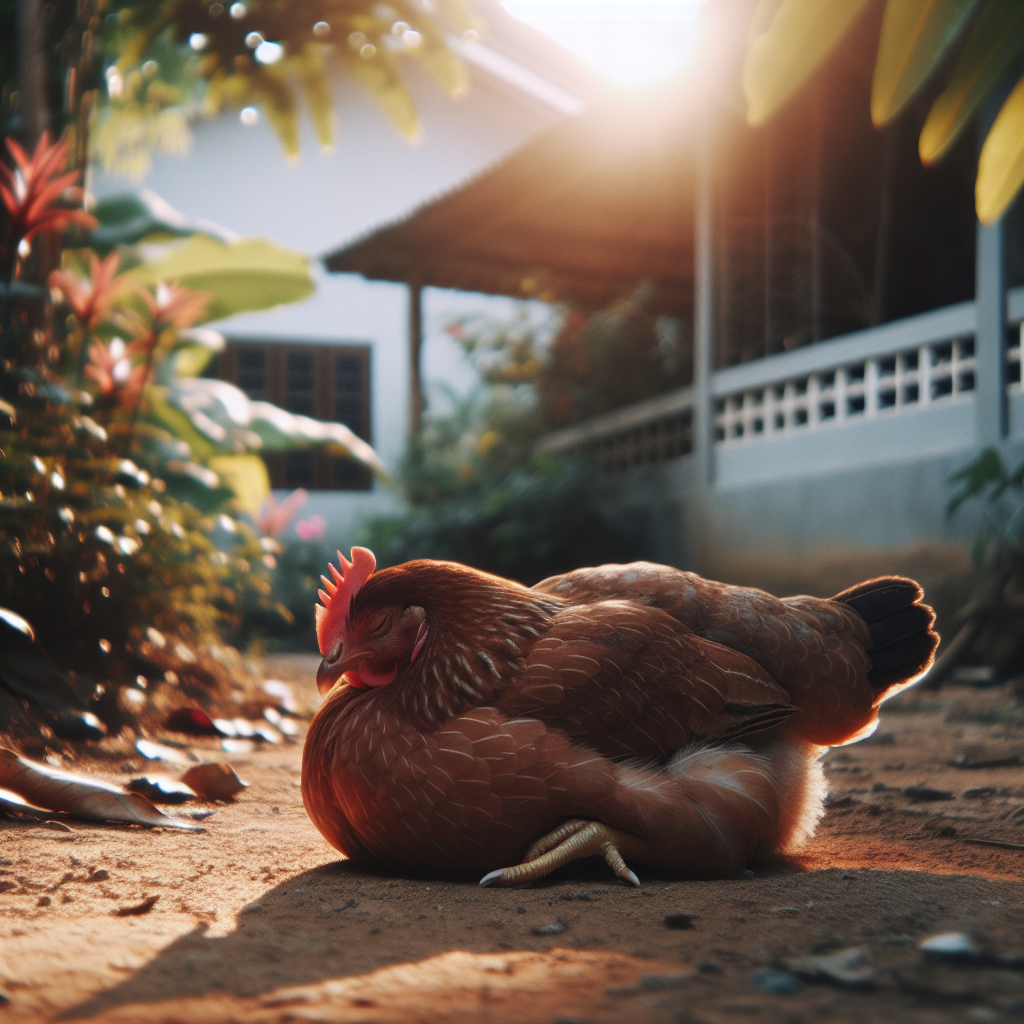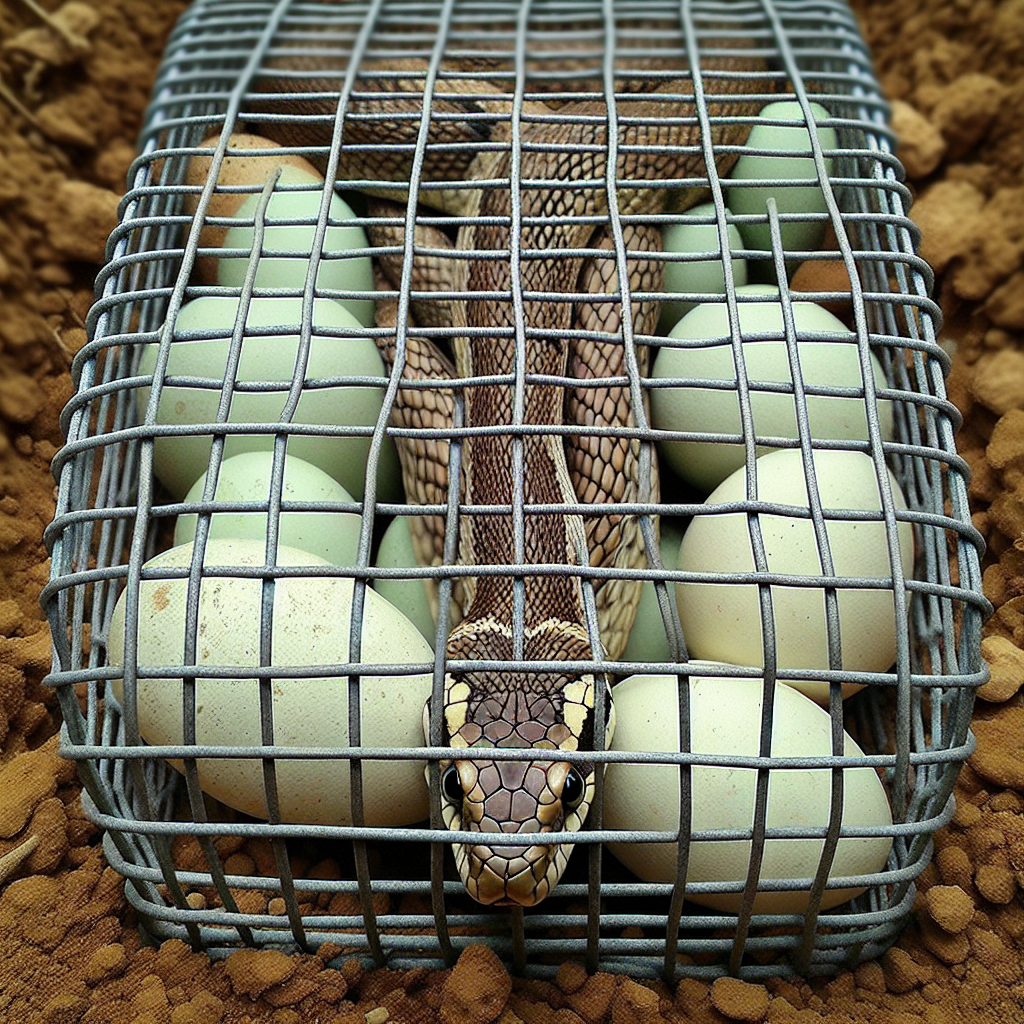If you’re a chicken owner, it’s important to keep a watchful eye on your flock’s well-being. Unfortunately, predators can pose a threat to their safety and overall health. So, how can you tell if your chicken flock has been attacked or stressed by a predator? There are several telltale signs that can help you decipher the clues, from changes in behavior to physical injuries. By being attentive and observant, you can ensure the safety and happiness of your feathered friends.
Physical signs
Injuries on chickens
One of the most obvious signs that your chicken flock has been attacked by a predator is the presence of injuries on your chickens. Look out for scratches, bite marks, or wounds on their bodies. These injuries can range from minor to severe, depending on the size and strength of the predator.
Missing chickens
If you notice that some chickens from your flock are missing, it could be a clear indication of a predator attack. Predators such as foxes, raccoons, or coyotes often target chickens as easy prey. Keep a close count of your chickens and be alert if any go missing suddenly.
Feathers scattered around the coop
Feathers scattered around the coop or in the surrounding area can indicate a predator attack. When predators attack, they usually pluck feathers from the chickens. These feathers may be strewn around the coop or found near the entrance or exit points.
Broken or damaged fences or coop
Inspect your fences and coop for any signs of damage or breakage. Predators are often quite strong and can break through flimsy fences or damage coop structures in order to gain access to your chickens. Look for any broken wires, bent bars, or torn mesh that could be evidence of a predator attack.
Disturbance of nest or laying area
If you notice that the nests or laying areas of your chickens have been disturbed, it could be a sign of a predator attack. Predators may dig into the ground or rummage through the nesting materials in search of eggs or chicks. Keep an eye out for any signs of disturbance in these areas.
Behavioral signs
Increased alertness or agitation
One of the behavioral signs indicating that your chickens may have been attacked or stressed by a predator is increased alertness or agitation. If your normally calm and relaxed chickens are suddenly on high alert, constantly looking around and appearing nervous, it may be a response to a recent predator attack.
Hiding or seeking shelter
Chickens that feel threatened or stressed by predators may start seeking shelter or hiding more frequently than usual. This behavior can be observed in various ways, such as chickens huddling together in a corner of the coop or hiding in bushes or under structures outside. It’s important to provide ample hiding spots and secure shelter for your chickens to help them feel protected.
Unusual or disrupted sleep patterns
Predator attacks can disrupt your chickens’ normal sleep patterns. If you notice that your chickens are having trouble falling asleep or are waking up frequently during the night, it could be a result of them being stressed or on high alert due to potential predator threats. Monitor their sleep behavior and make necessary adjustments to ensure their comfort and security.
Reduced egg production
Stress caused by predator attacks can also impact your chickens’ egg production. If you notice a sudden decrease in egg production or a complete halt in laying, it might be a sign that your flock is under stress. Stress hormones released during such situations can interfere with their reproductive cycle. Provide a calm and safe environment for your chickens to help restore their normal egg-laying patterns.
Loss of appetite or weight loss
When chickens are stressed or traumatized by a predator attack, they may experience a loss of appetite or weight loss. Monitor their eating habits and look out for any prolonged periods of reduced food intake or noticeable weight loss. Providing a calm and stress-free environment, along with a balanced diet, can help them regain their appetite and health.
Abnormal or excessive vocalization
Chickens often communicate through vocalization, but if you notice an increase in abnormal or excessive vocalization among your flock, it could be a sign of distress or agitation caused by a predator threat. Pay attention to any unusual sounds or cries, as they might indicate that your chickens are feeling vulnerable or threatened.
Signs in the surroundings
Tracks or footprints near or inside the coop
Inspect the surroundings of your coop for any tracks or footprints that could belong to potential predators. Different predators have distinct footprints, so if you come across any paw prints, claw marks, or distinctive tracks, it can help you identify the type of predator you are dealing with. Take photographs if possible to share with local wildlife experts for further identification.
Burrows or tunnels in the vicinity
Some predators dig burrows or tunnels to gain access to chicken coops. If you spot any newly dug holes or tunnels near your coop, it could indicate the presence of burrowing predators like foxes or raccoons. Ensure that these burrows are filled in to prevent further access.
Presence of feathers or carcasses nearby
Feathers or carcasses found in the vicinity of your coop can be a clear sign of predator activity. Predators often leave behind feathers after attacking chickens. Look for any scattered feathers or even carcasses of smaller animals that may have been brought as prey to your coop area.
Disturbed vegetation or signs of struggle
When predators attack, they may leave behind signs of struggle or disturbance in the vegetation surrounding your coop. Look for broken branches, trampled grass, or flattened areas near your coop, as these could suggest recent predator activity. Take note of any unusual changes in the appearance of shrubs or plants, as it may indicate disturbances caused by predators.
Missing or disturbed food or water sources
Predators may target your chickens’ food and water sources as well. If you notice that food containers or water dispensers are disturbed or missing, it could be a sign of predator presence. Predators like raccoons or rats can easily tamper with these sources, so ensure they are securely stored or covered to prevent further access.
Indirect signs of predation
Increased presence of other predators
If you observe an increase in the presence of other predators in your area, it may suggest that your chicken flock is at risk of attacks. Predators often move in search of food sources, and if one predator successfully attacks your flock, it may attract others. Keep an eye out for unfamiliar or unusual predator sightings near your property.
Neighboring flocks experiencing attacks
Communication with neighbors who also raise chickens can provide valuable insights into predator threats. If your neighbors are experiencing similar attacks or have noticed predator activity in the vicinity, it signifies a higher risk for your own flock. Exchange information and collaborate on implementing preventive measures to protect all the flocks in the area.
Reports of predator sightings in the area
Stay informed about any reports or sightings of predators in your local area. Local news, social media groups, or community forums can be useful sources of information regarding predator activity. Be proactive in gathering information and take necessary precautions to safeguard your flock against potential threats.
Unusual behavior or aggression in local wildlife
Observe the behavior of local wildlife in your area. If you notice any unusual aggression or changes in behavior among animals such as raccoons, foxes, or coyotes, it may be an indication of increased predator activity. Animals that are normally shy or avoidant may become bolder and more confrontational when searching for food sources.
Damage to other livestock or pets
Predators that target chickens are likely to target other livestock or pets as well. If you find evidence of attacks or injuries on other animals in your area, it may suggest that a predator is active. Collaborate with fellow animal owners to address the issue collectively and implement preventive measures to protect all animals.
Evidence of previous predator activity
Look for any previous signs of predator activity around your coop or property. This could include old tracks, nests, or burrows, indicating that predators have targeted your area before. Identifying these signs will help you better understand the predator’s behavior and enable you to implement more effective prevention and protection measures.
Prevention and protection measures
Regular inspection of coop and fences
Regularly inspecting your coop and fences is crucial in preventing predator attacks. Check for any signs of damage, weakness, or vulnerability in the structure. Repair any broken wires, reinforce weak spots, and ensure that there are no gaps or openings that predators can exploit. Conduct inspections at least once a month or after extreme weather conditions.
Installing motion-activated lights or alarms
Motion-activated lights or alarms can be effective deterrents for nocturnal predators. Install these devices around your coop and property perimeter to scare off potential threats. The sudden activation of lights or the loud noise of an alarm can startle predators and discourage them from approaching your chickens.
Securing the coop with strong locks and latches
Make sure your coop is secured with strong locks and latches that predators cannot easily manipulate. Regularly check the functionality of locks and replace them if necessary. A sturdy and well-locked coop will greatly reduce the risk of predators gaining access to your chickens.
Using predator-proof netting or wire on windows and openings
Covering windows and openings of your coop with predator-proof netting or wire is essential. This prevents predators from gaining entry through small gaps or openings. Ensure that the netting or wire is tightly secured to prevent any chances of predators squeezing through or tearing it.
Removing potential hiding spots or access points
Eliminate any potential hiding spots or access points to deter predators from approaching your coop. Trim back bushes, remove overgrown vegetation, and secure loose fencing or structures. By creating an open and well-visible environment, you reduce the chances of predators lurking around your chickens.
Using guard animals or deterrents
Consider using guard animals or deterrents to help protect your flock from predation. Certain dog breeds, like livestock guardian dogs, have a natural instinct to protect farm animals and can be trained to ward off predators. Alternatively, you can also use visual deterrents such as scarecrows, shiny reflective materials, or even predator decoys to discourage predator activity.
Immediate response to an attack or stress
Securing the remaining flock and providing a safe area
In the event of a predator attack, it is crucial to secure the remaining flock and provide them with a safe and protected area. Move them to a separate coop or enclosure where they can be closely monitored. Ensure that this area is predator-proof and offers sufficient space, food, and water for the chickens’ well-being.
Contacting a veterinarian for injured chickens
If any of your chickens are injured during a predator attack, it’s important to contact a veterinarian for immediate medical attention. Professional veterinary care can help treat wounds, administer necessary medications, and provide guidance on ensuring the best possible recovery for your chickens.
Checking for any injured or trapped chickens
After a predator attack, carefully inspect the area to check for any injured or trapped chickens. Look for hiding spots or areas where chickens may have gotten stuck or injured while trying to escape. Provide immediate assistance and medical attention to any chickens in need.
Cleaning and sanitizing the coop and surroundings
After a predator attack, it is essential to thoroughly clean and sanitize the coop and its surroundings. Remove any carcasses, feathers, or signs of struggle. Disinfect the coop with a suitable cleaning agent to prevent the spread of disease and to help your chickens feel safe in their environment once again.
Reinforcing coop security measures
Following a predator attack, it is crucial to reassess and reinforce the security measures in place. Identify any vulnerabilities or weaknesses that the predator exploited and take steps to address them. Whether it’s repairing damaged fences, improving locks, or adding additional deterrents, enhancing coop security will help prevent future attacks.
Predator identification
Identifying tracks or footprints
Identifying tracks or footprints can provide valuable insight into the predator responsible for attacking your chickens. Familiarize yourself with the footprints of common predators in your area. Look for paw prints, claw marks, or distinctive features that can help you determine the predator’s identity.
Observing preferred hunting times and patterns
Different predators have preferred hunting times and patterns. Familiarize yourself with the hunting patterns of local predators and observe their behavior. Pay attention to any consistent activity around your coop during certain times of the day or night. This will help you narrow down the list of potential predators.
Examining bite marks or wounds
If your chickens have been attacked, examining the bite marks or wounds can give you important clues about the predator responsible. Each predator leaves distinct signs of attack, ranging from small teeth marks to larger puncture wounds. Take photographs or consult with a local wildlife expert for accurate identification.
Analyzing feathers or fur left behind
Feathers or fur left behind after an attack can also aid in predator identification. Collect and analyze any feathers or fur found near the coop, as they can provide valuable clues about the predator species. Compare them to samples or photographs of known predator feathers or fur to narrow down the possibilities.
Setting up motion-activated cameras or traps
Setting up motion-activated cameras or traps can be an effective way to capture evidence of predators that are attacking your chickens. Place cameras in strategic locations around your coop, and monitor the footage for any predator activity. Traps can also help capture predators alive, enabling you to identify them and safely relocate them if necessary.
Common predators of chickens
Foxes
Foxes are skilled hunters and pose a significant threat to chickens. They are known to dig under or jump over fences to access coops, and can quickly decimate a flock if not properly protected.
Coyotes
Coyotes are highly adaptive predators and have been known to prey upon backyard chickens. They are smart, opportunistic hunters, and can pose a threat both during the day and at night.
Raccoons
Raccoons are notorious for raiding chicken coops in search of eggs or young chicks. Their dexterity, intelligence, and ability to open doors and containers make them a formidable threat to backyard flocks.
Possums
Possums are opportunistic omnivores and can target chickens if given the chance. They may attack chickens during the night, usually focusing on eggs or chicks.
Skunks
Skunks are nocturnal predators that can cause significant damage to a chicken flock. They are known to dig under fences and attack chickens, especially during the night when chickens are more vulnerable.
Weasels
Weasels are small but highly efficient predators that can slip through small openings in the coop. They are agile and voracious hunters, capable of killing multiple chickens in a short span of time.
Snakes
Certain snake species, such as rat snakes or black racers, are known to prey on chickens. They can enter coops through small openings and will target eggs and chicks as their primary food source.
Owls
Owls are nocturnal predators that pose a threat to chickens, especially small or young ones. They are silent hunters and can swoop down to snatch chickens from the ground or perch near coops to prey on them.
Hawks
Hawks are diurnal predators that can target chickens during the day. They are known for their aerial hunting skills and can swoop down from above to snatch chickens from open areas.
Domestic dogs or cats
Even domestic dogs or cats can be a predator threat to chickens, especially if they are not properly supervised or have a history of hunting instincts. It is important to train and supervise pets around chickens to prevent attacks.
Environmental factors that contribute to predation
Lack of proper lighting or visibility
Insufficient lighting or limited visibility around the coop can increase the risk of predation. Predators are more likely to approach when the area is poorly lit, as it provides cover and reduces the chance of being detected. Ensure that your coop area has adequate lighting to deter predators and enhance overall security.
Inadequate fencing or coop structure
Weak or inadequate fencing and coop structures provide easy access for predators. Holes, gaps, or weak spots in fences can be exploited by predators to gain entry. Regularly inspect and reinforce your fencing and coop structure to minimize vulnerability and deter predators.
Proximity to forested or natural areas
Living in close proximity to forested or natural areas increases the chances of predator interactions with your chickens. Predators naturally inhabit these environments and may venture into residential areas in search of prey. Take extra precautions when your coop is situated near such habitats.
Lack of predator deterrents or control methods
Failure to implement proper predator deterrents or control methods can contribute to increased predation. Installing deterrents such as lights, alarms, or physical barriers can significantly reduce the risk of predator attacks. Additionally, consider working with local wildlife authorities to implement population control methods if predator numbers become excessive.
Overpopulation of predators in the area
High predator populations in your area can increase the likelihood of attacks on your chickens. Factors such as a decrease in natural prey or uncontrolled breeding can lead to an overpopulation of predators, putting your flock at greater risk. Regular monitoring and collaboration with local authorities can help manage predator populations effectively.
Recognizing stress-related symptoms
Feather-pecking or cannibalism
Feather-pecking or cannibalism among chickens can be a sign of stress within the flock. Chickens may resort to aggressive behavior towards each other, resulting in pulling out feathers or even cannibalizing weaker individuals. This abnormal behavior often results from high stress levels, possibly triggered by predator threats.
Vices or abnormal behaviors
Stressed chickens may exhibit vices or abnormal behaviors that deviate from their normal routines. This can include excessive pacing, excessive dust bathing, or repetitive pecking at surfaces or objects. These behaviors are indications of frustration or anxiety resulting from predator stress.
Feeding or drinking habits
Stressful situations can disrupt chickens’ usual feeding or drinking habits. Some chickens may start eating excessively, while others may lose interest in food or water altogether. Monitor their feeding and drinking behaviors closely, as sudden changes can indicate high stress levels.
Reduced or abnormal vocalization
High stress can affect chickens’ vocalization patterns. Some chickens may become unusually quiet or stop vocalizing altogether, while others may exhibit excessive or abnormal vocalization. Vocal changes often serve as a clear sign of distress or anxiety related to predator threats.
Aggression or bullying within the flock
The presence of a predator threat can cause increased aggression or bullying behaviors within the flock. Stressed chickens may become more territorial, leading to escalated fights and pecking order disputes. Keep an eye out for any signs of aggression that could be attributed to predator-induced stress.
Abnormal reproductive behavior
Stress in the flock can impact chickens’ reproductive behavior. This can manifest as lowered fertility, reduced or halted egg production, or even abnormal mating behaviors. Monitor your chickens’ reproductive processes and take necessary steps to alleviate stress in order to restore normal reproductive behavior.
In conclusion, being able to recognize and interpret the signs that your chicken flock has been attacked or stressed by a predator is crucial for their well-being and safety. By understanding the physical, behavioral, and environmental indicators of predator activity, you can take proactive measures to prevent future attacks and minimize stress within your flock. Regular inspections, implementing security measures, and observing changes in behavior will help you maintain a secure and stress-free environment for your chickens.




